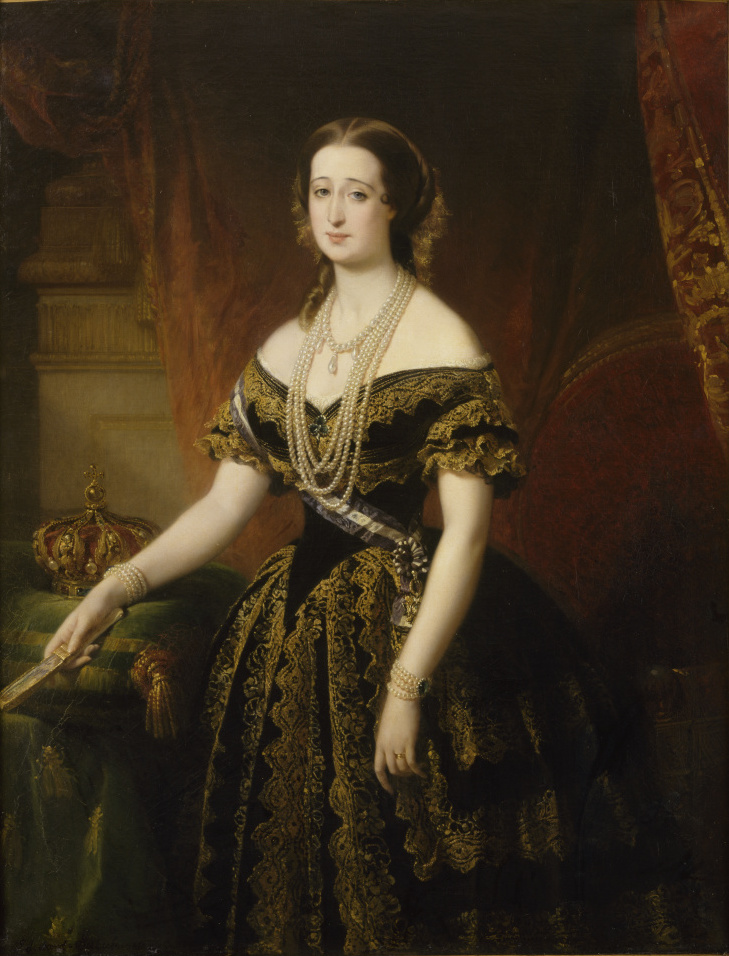|
Contact the seller in advance before paying for the order! Victorian Jewelry – Fit For A Queen
Queen Victoria loved jewelry and it is said that she even designed some her self. Due to her long time as Britain's matriarch the jewelry fashion changed over time, so the Victorian era is mainly divided into three periods, each hugely influenced by happenings in the life of the queen. The romantic period (1837 – 1860): Jewelry with deeper meaning, like lockets with small enameled pictures of loved ones, or locks from their hair, became very popular. Eden like symbols as grapes, flowers and serpents were frequently used in jewelry design. Bold gold ornaments were decorated with intricate engraving, delicate enamel work and often accented with seed pearls, turquoise and pink coral. Coral was hugely popular in the early Victorian ages, but later fell from grace and was eventually seen as a bit vulgar. Typical Victorian jewelry from the Romantic period were micro mosaic jewelry, cameo brooches, stick pins with cameos of shell, carnelian and Wedgwood ceramic. So were brooches decorated with Limoges – miniature painted enamel portraits, surrounded by Etruscan style granulation, filigree and fleur d'lis.
The queen also brought back into fashion the so called hair jewelry, which became very popular as a personal gift and a token of affection and love, but also used as mourning jewelry. Hair from loved ones was woven into beautiful ornaments, used for pins, brooches and wrist bands often set with gemstones and covered with a glass dome. For a period of time hair jewelry became the second largest jewelry industry, and made hair more valuable than silver per oz. People could make their own hair jewelry or buy hair jewelry kits. They could also have professionals do it for them. These magnificent pieces of Victorian jewelry can today be found at antique stores and auctions where they are sold for thousands of dollars. The earlier years of Victoria's reign was influenced by several happenings that made huge changes in the jewelry business. The industrial revolution made the mass production of jewelry and beads possible at a lower cost than before. The electroplating was applied commercially in the 1840's, and gemstone imitations like paste made it possible for everyone to afford beautiful looking jewelry, at a fraction of the price of their precious counterparts. Jewelry became more affordable and with that available to the whole society, not just the nobility. Until gold was discovered in California in 1848, the supply of gold was scarce and led jewelers to work precious metals into thin sheets and wires. From this they created large and puffy jewelry that was very light weight, like filigree. The queen loved jewelry and so did her people. Victorian jewelry was worn in abundance. Multiple bracelets, often charm bracelets were worn at the same time. The tight bodice of the dresses, was perfect for brooches. Several necklaces often with big pearls or gemstones and several rings on each finger were in fashion, as were lavishing earrings. In 1848 Queen Victoria and Prince Albert bought Balmoral castle in Scotland, something that influenced the queen to use Celtic motifs in her jewelry designs, using them in brooches, pins and pendants often with polished Agate. This Scottish inspired Victorian jewelry became very popular in the late years of the romantic period, especially The Celtic revival cross, worn as a pendant or pin. The joyous and gay life came to an abrupt halt in 1861 when Prince Albert died. The queen went into heavy mourning which brought the Romantic period to an end. The Grand Period (1861 – 1888): 
Mourning jewelry was nothing new, but had a long tradition. It was usually a piece of jewelry that contained some hair or ash from the deceased, like a locket, a vial pendant or a brooch. During the first three years of mourning only dark jewelry could be worn, and Victoria's mourning brought gemstones like Jet, onyx, Hematite and Garnet back into the jewelry industry like never before. Even dark metals or enamel were used to create these dark, sombre but beautiful pieces of jewelry. In the early 1860 Big and Bold was in fashion, and mourning jewelry were no exception. At the same time archaeological discoveries like Pompeii, and Etruscan and Egyptian grave findings brought new inspirations to Victorian jewelry. Replicas of jewelry found at archaeological sites, made with colored glass and plated metals hit society and became very popular. New discoveries of silver made silver more affordable in the 1870s. Beautiful engraved Victorian jewelry like brooches, lockets and jewelry with monograms and other whimsical jewelry were in fashion and available for the middle classes. The discovery of diamonds in South Africa in 1867 increased the supply of diamonds, and they were used lavishly in Victorian jewelry. Despite this, the queens mourning was hard on jewelers and some almost went bankrupt, due to her influence on the fashion world. She had retired from the public and her popularity was receding among the people. Some jewelers appealed to Queen Victoria's daughter in law Alexandra for help, which brought the mourning period to an end in 1888. And with this, the third period of Queen Victoria's era began. The late period (1888 – 1901):
Jewelry with sparkling diamonds are very characteristic for the late Period. Motifs like insects, animals, crescent moons, stars, flowers, griffins and dragons were popular. However, unlike in the 1860, where The bigger the better ruled, women now started to work outside their homes, and jewelry more fitting for their new roles came in demand. Faceted gems of softer colors and more delicate patterns started to dominate the jewelry industry. The industrial development made Foil backed opals, joined with their paste counterparts like simulated diamonds, emeralds, ruby and sapphire from glass, into jewelry available for the majority of the people. Jewelry became again whimsical and light. Slowly the queen regained her popularity with her people, and remained so til her death in 1901. Victorian jewelry: Spanning over almost a decade it was heavily influenced by other jewelry styles like the Gothic, Celtic and renaissance style. Art Nuveau which has its own very recognizable style also developed through the Victorian era. With the world getting smaller by British colonization and with new archaeological findings, oriental styles also influenced the jewelry fashion during the century.
The early Victorian era brought with several jewelry styles from earlier eras, like Elizabethan style jewelry. Different styles came and went, and existed side by side during the great Queens life. Victorian jewelry is today very popular in the Neo-Gothic subculture. The themes with griffins, dragons in particular, which again was brought into the Victorian jewelry trend from the ancient Gothic style. Whether the queen actually had a hand in the designing of Victorian jewelry, I don't know, but the era was dominated by a strong and popular queen who loved beautiful clothes and jewelry, influencing fashion even during her mourning period. She tailored fashion to fit the new vision of the ideal woman as pure, unadulterated and sub serviced, wrapped in a beautiful package of dress and jewelry. And for her husband Prince Albert, well, he is said to be the founder of a very special form of body jewelry, the Prince Albert piercing, brought on due to the puritan spirit of the era. What the queen thought about it? Well, apart from mourning for almost 30 years, her thoughts are lost in history. Return from Victorian Jewelry to Jewelry Trends |
Loans for US Residents:
Choose what you need:
Jewelry and polymer clay tutorial heaven

Promote Your Page Too
 Victorian jewelry has its name after one of the greatest Queens in history, Queen Victoria of great Britain, who reigned for close to 65 years, making her the longest reigning monarch of all times. Becoming a queen at early age, she became the idol of how women should dress and behave and therefor had a tremendous influence on fashion from early 19th century and to the beginning of the 20th century.
Victorian jewelry has its name after one of the greatest Queens in history, Queen Victoria of great Britain, who reigned for close to 65 years, making her the longest reigning monarch of all times. Becoming a queen at early age, she became the idol of how women should dress and behave and therefor had a tremendous influence on fashion from early 19th century and to the beginning of the 20th century.




